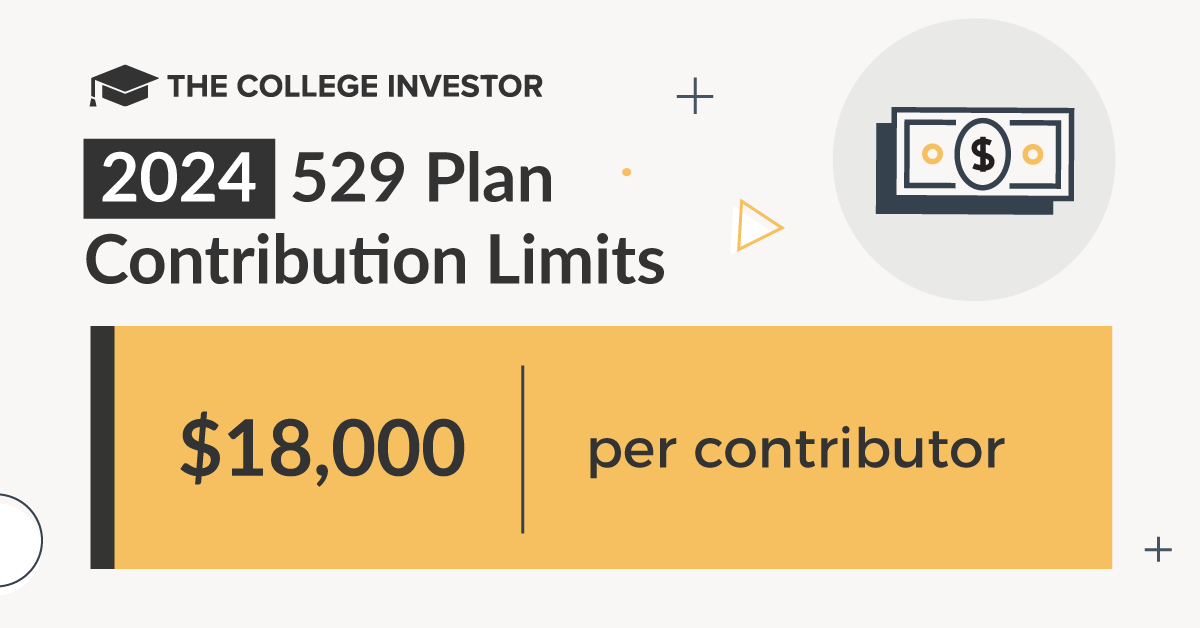
529 plans are tax-advantaged accounts that allow you to spend money on qualified education expenses. These plans are often called 529 college savings plans but they apply to K-12 expenses as well. Qualified expenses include tuition, board, and books.
There are over one hundred 529 plans across the United States. While plans are state-specific, in most cases you don’t have to be a state resident to invest in its 529 plan. 529 plans have various limits on contributions and states control these limits.
Let’s look at how 529 plan contribution limits work.
How 529 Plans Work
Money that goes into a 529 plan is after-tax dollars. However, those dollars will grow tax-free. This means tax-free at the federal level. State-level taxing will vary by state but many states offer 529 plan tax breaks.
529 plans come in two flavors — a locked-in rate (similar to an annuity) and savings plans, which allow you to invest in different funds, earning a variable return.
Plans that have a locked rate allow you to calculate from day one what your return will be. Plans that allow investing in funds are more dependent on the fluctuations of the stock market.
529 Plan Contribution Limits
What are the 529 plan contribution limits? They are based on the gift tax guidelines.
In 2024, the annual 529 plan contribution limit rises to $18,000 per contributor.

Unlike retirement accounts, the IRS does not impose annual contribution limits on 529 plans. Instead, limits are based on aggregate contributions and controlled by states.
This means a person can contribute a large amount in one year as long as it doesn’t go over the aggregate limit. Some states do impose an annual limit on contributions. There can also be a few obstacles to making such large contributions in a single year, which we’ll get into later.
529 plan contribution limits are generally large. They range from $235,000 to $531,000. Some per-beneficiary contribution limits are listed below:
- Arizona — $531,000
- Georgia and Mississippi — $235,000
- North Dakota — $269,000
- Michigan, Maine, Idaho, Louisiana, South Carolina, Washington, and Washington DC — $500,000
- California — $529,000
Most states offer multiple 529 plans and you may find that plans within the same state that have different limits. For example, the MO ABLE Missouri 529 plan has an aggregate limit of $482,000 while the MOST Missouri 529 Education Plan (Direct-sold) has a limit of $325,000. Both plans, however, impose a per-year contribution limit of $18,000.
You can open a plan in every state if you wanted. A family can have 529 plans in multiple states and use them to pay for college in any state. The aggregate contribution limit in one state’s 529 plan does not consider amounts saved in 529 plans in other states.
If a family invested to the limit in all the states, the total contributions could be as much as $23.3 million per beneficiary.
When choosing a plan, you’ll want to check to see if there are only aggregate limits or annual limits as well. Also, don’t confuse any limitations that your state of residence may impose if you are investing in an out-of-state plan. Any limits are only imposed by the plan you are investing in. If that happens to be an out-of-state plan, your state of residence doesn’t have any say in your 529 plan contribution limits.
Gift Tax Considerations
Any money or property, including 529 plan contributions, that you give to someone is likely to be considered a "gift" by the IRS. Thankfully, there is an annual gift tax exclusion of $18,000 per recipient in 2024.
Even if you gift more than $18,000 per individual per year, it will simply count toward your lifetime gift tax exclusion. You’d have to give $13.6 million over your lifetime before you'd run into paying gift taxes. Learn more about the gift tax and who pays it.
Super Funding: The 5-Year Election
The 5-year election allows you to contribute up to $90,000 to an individual’s 529 plan in a single year while spreading it out over 5 years. For each of the 5 years, you must report the 5-year election on IRS form 709.
This is a great option to use if you anticipate higher expenses during the first year. You’ll also be able to take advantage of compounding growth.
How To Choose A 529 Plan
There are a few things to keep in mind when choosing a 529 plan. 529 plans are always tax-free at the federal level. Some states provide a state tax break as well.
For states with income taxes, you’ll want to make sure the tax savings are enough to cover the 529 plan fees. If not, keep in mind that you don’t have to invest in your state’s 529 plan and that there are over one hundred 529 plans available to choose from.
Fees are a big consideration with 529 plans. These include annual account fees, management fees (or expense ratio) on funds, and load fees. In addition to comparing fees, pay attention to any extra included benefits. For example, some 529 plans provide matching contributions.
Ready to start saving? Check out this guide to see the 529 options available in your state, the benefits you may be eligible for, and our top recommendations.

Robert Farrington is America’s Millennial Money Expert® and America’s Student Loan Debt Expert™, and the founder of The College Investor, a personal finance site dedicated to helping millennials escape student loan debt to start investing and building wealth for the future. You can learn more about him on the About Page or on his personal site RobertFarrington.com.
He regularly writes about investing, student loan debt, and general personal finance topics geared toward anyone wanting to earn more, get out of debt, and start building wealth for the future.
He has been quoted in major publications, including the New York Times, Wall Street Journal, Washington Post, ABC, NBC, Today, and more. He is also a regular contributor to Forbes.
Editor: Clint Proctor Reviewed by: Colin Graves